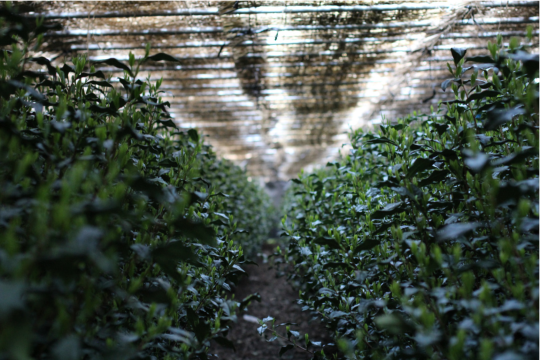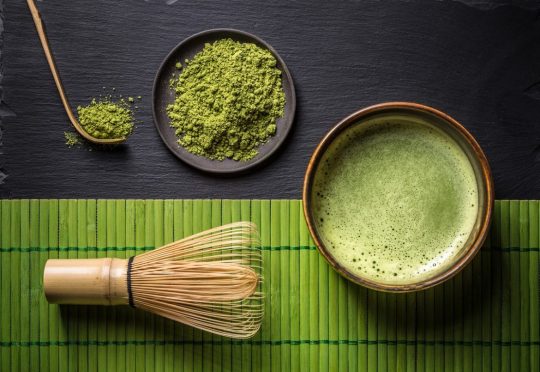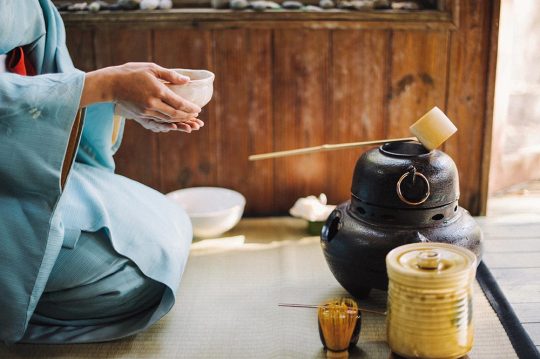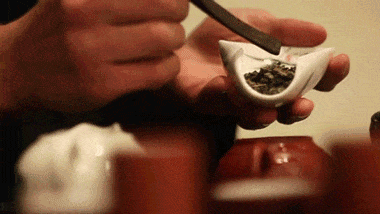#gallery-1 {
margin: auto;
}
#gallery-1 .gallery-item {
float: left;
margin-top: 10px;
text-align: center;
width: 100%;
}
#gallery-1 img {
border: 2px solid #cfcfcf;
}
#gallery-1 .gallery-caption {
margin-left: 0;
}
/* see gallery_shortcode() in wp-includes/media.php */
DISCOVER: The Way of Matcha
Tea in Japan is a serious business. Making the perfect cup of matcha – green tea to you and I – takes knowledge, practice and patience.
Although green tea flavoured food and drink can be found all over Japan, from frothy matcha frappuccino’s to grass-green matcha Kit Kats, the skill and ceremony behind growing and brewing matcha is steeped in ancient tradition.
Read on for a brief insight into growing Japanese matcha, and how to prepare a proper cup of the green stuff.

Growing: The matcha magic starts in early April, when the first few shoots appear on the bushes. Tea is grown all over Japan, but it’s in Kyushu’s Kagoshima prefecture, Mie in central Honshu and Shizuoka surrounding Mount Fuji that the bulk of the crops are grown – well over half of the country’s overall harvest. Three to eight weeks before picking, large frameworks loaded with rice straw are built over the tea destined to become matcha – blocking out the sunlight. By slowing down photosynthesis, the leaves are higher in theanine, responsible for giving matcha its clean, mellow flavour.
The first leaves are picked on the 88th day after Rissun – the first day of spring according to the traditional calendar – and are immediately steamed and blow dried in multi-chambered air machines. The leaves are then laid flat and allowed to disintegrate. Removing the stems and veins produces tencha – ground tea – made by pulverising the leaves in stone mills to produce the bright green powder we all know and recognise.
There are three main grades of matcha and the quality is reflected in the price. Low grade matcha is reserved for use in cooking, usucha ‘thin tea’ is the most commonly drunk, and koicha ‘thick tea’ is reserved for special occasions.

Preparing: There is of course a correct way to make matcha and veering from tradition can easily result in an unpleasant bitter brew. As with any worthy food preparation, matcha-making demands a sizable list of specialist paraphernalia. Before you get started, your basic kit should include chashaku, chasen, furui, chakin and chawan – or a bamboo scoop, a bamboo whisk, a sieve, a linen tea cloth and a tea bowl. A thermometer is optional but recommended, if you’re to keep your water at the optimum temperature between 70°C and 80°C.
There are a wealth of guides out there on how to whip up the perfect cup of usucha, but in brief – first sift 1 scoop of matcha powder into the chawan bowl, followed by 70ml of hot water. Next whisk the tea vigorously to form a thick froth of tiny bubbles and drink immediately – within 3 minutes – to enjoy the flavour before the water cools and the froth disappears.

Tea Ceremony: Whilst everyday usucha is enjoyed much in the way we drink tea in the west, preparing and drinking koicha comes with a whole new set of rules and added sense of ceremony.
Formal tea ceremony in Japan is where the truly ancient tradition surrounding matcha can be discovered. The enjoyment of the tea itself is only part of the experience, with huge weight and significance placed on the surrounding environment, formal dress, tea-making tools and of course, the act of brewing the tea itself. Tea houses and their surrounding gardens are meticulously designed for maximum aesthetic effect, and guests invited to enjoy a cup of koicha are encouraged to use all senses – appreciating not just the taste of the tea, but the sights, sounds and smells of the ceremony, too.


